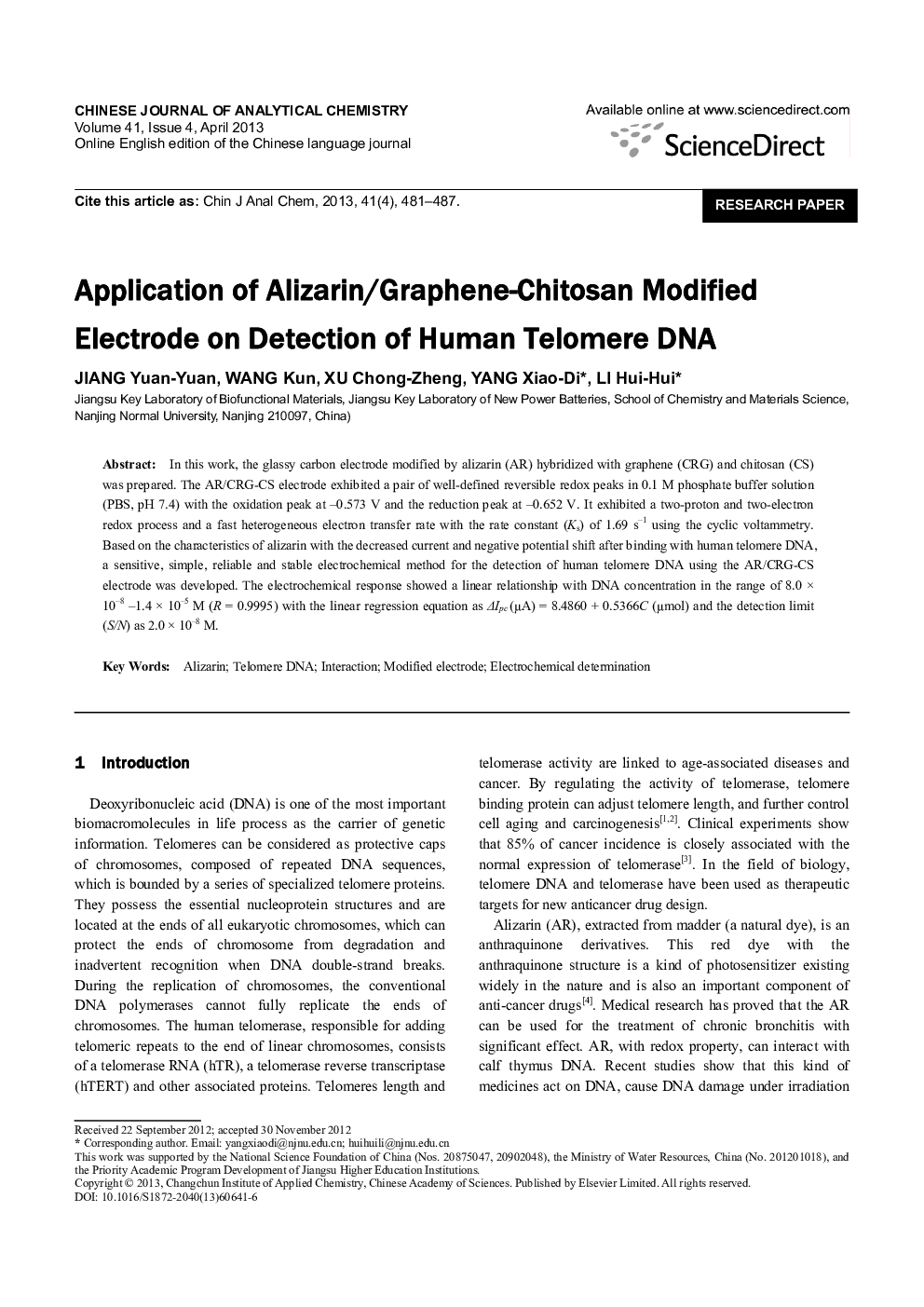| کد مقاله | کد نشریه | سال انتشار | مقاله انگلیسی | نسخه تمام متن |
|---|---|---|---|---|
| 1182272 | 1491650 | 2013 | 7 صفحه PDF | دانلود رایگان |

In this work, the glassy carbon electrode modified by alizarin (AR) hybridized with graphene (CRG) and chitosan (CS) was prepared. The AR/CRG-CS electrode exhibited a pair of well-defined reversible redox peaks in 0.1 M phosphate buffer solution (PBS, pH 7.4) with the oxidation peak at −0.573 V and the reduction peak at −0.652 V. It exhibited a two-proton and two-electron redox process and a fast heterogeneous electron transfer rate with the rate constant (Ks) of 1.69 s−1 using the cyclic voltammetry. Based on the characteristics of alizarin with the decreased current and negative potential shift after binding with human telomere DNA, a sensitive, simple, reliable and stable electrochemical method for the detection of human telomere DNA using the AR/CRG-CS electrode was developed. The electrochemical response showed a linear relationship with DNA concentration in the range of 8.0 × 10−8 −1.4 × 10−5 M (R = 0.9995) with the linear regression equation as ΔIpc (μA) = 8.4860 + 0.5366C (μmol) and the detection limit (S/N) as 2.0 × 10−8 M.
In this experiment, because of π-π stacking interaction between conjugated electrons of the aromatic ring of AR and sp2 electrons of the GR, the redox electrochemical signals of AR can be amplified in electrode. Upon the interaction between AR and telomere DNA, the redox peak potentials of AR negatively shifted and peak current decreased comparing with AR bank solution. Based on this principle, the quantification method of human telomere DNA was established.Figure optionsDownload as PowerPoint slide
Journal: Chinese Journal of Analytical Chemistry - Volume 41, Issue 4, April 2013, Pages 481–487